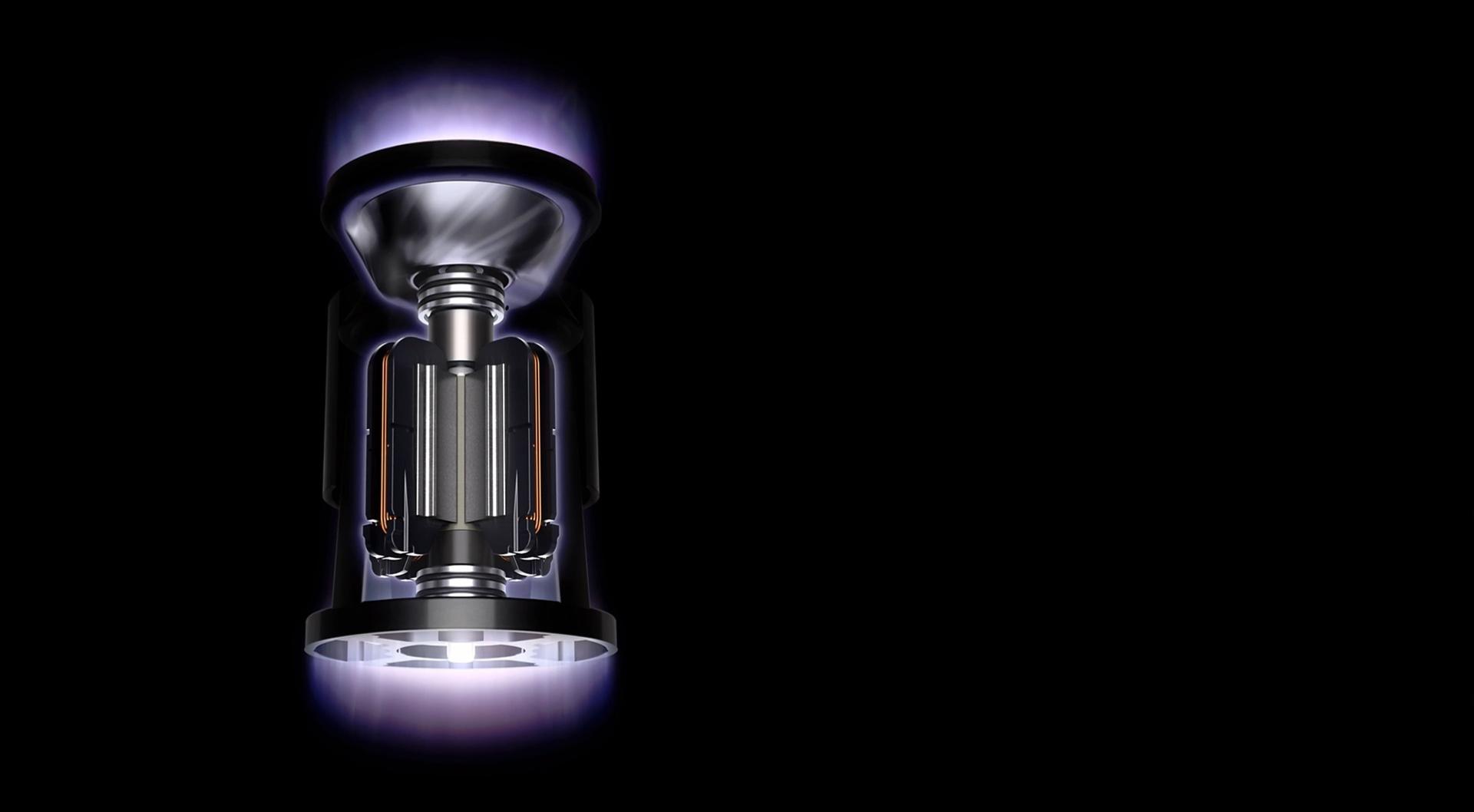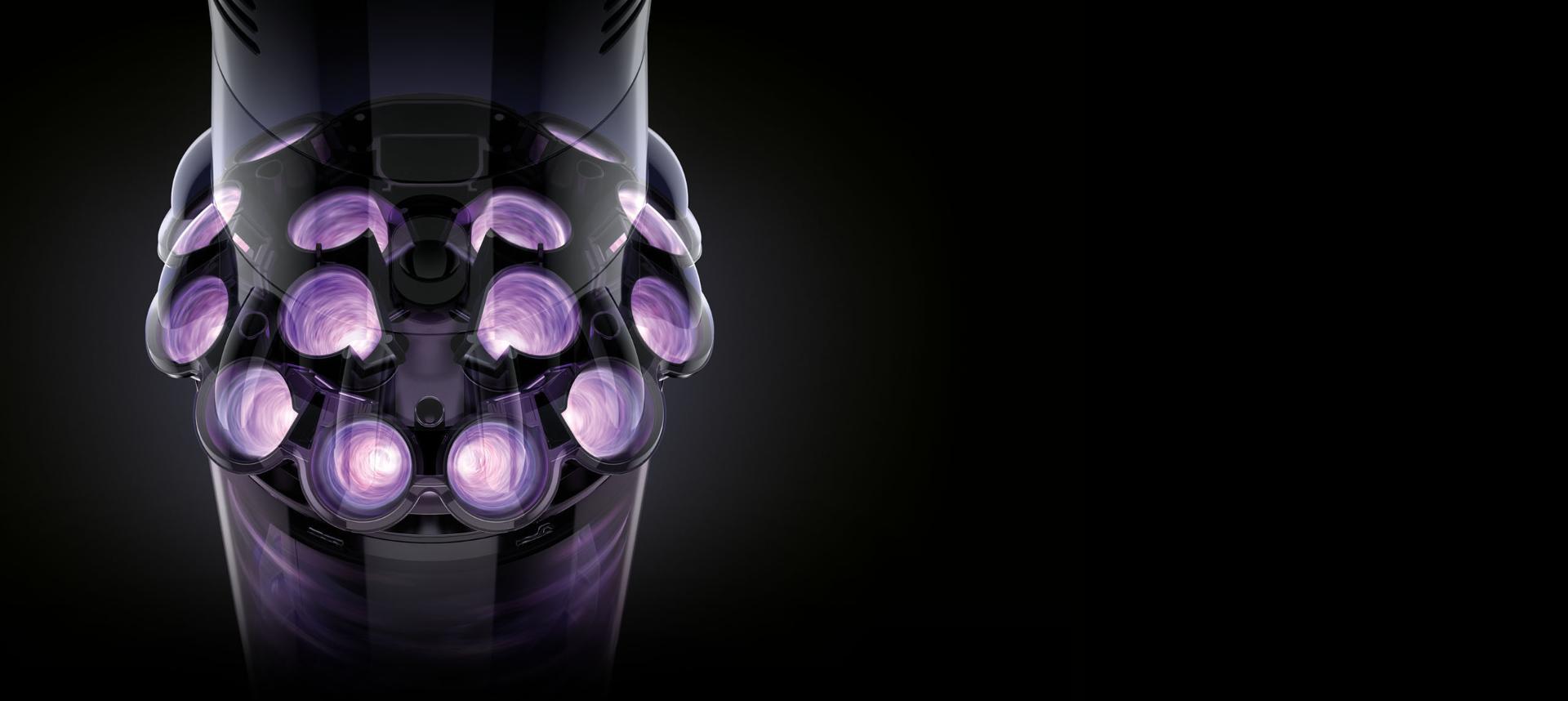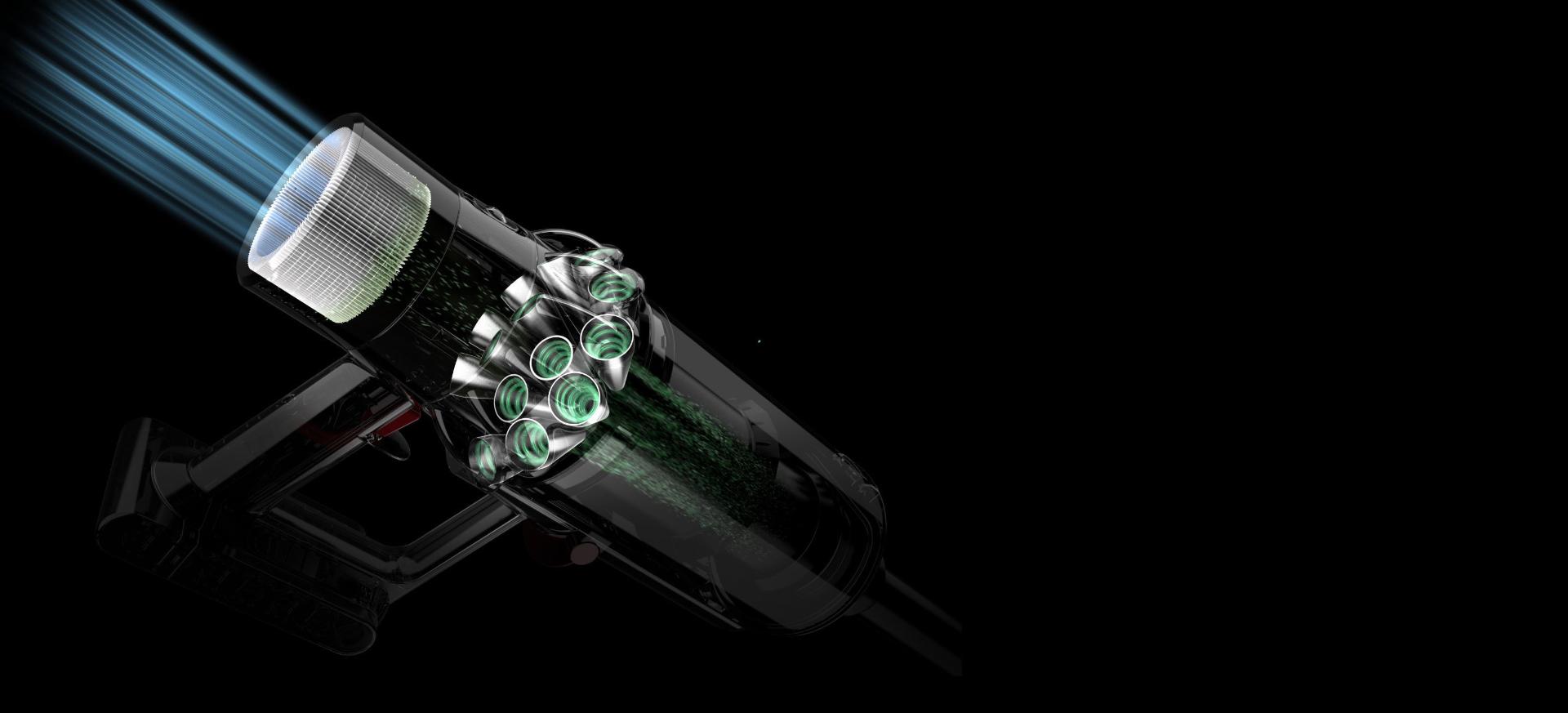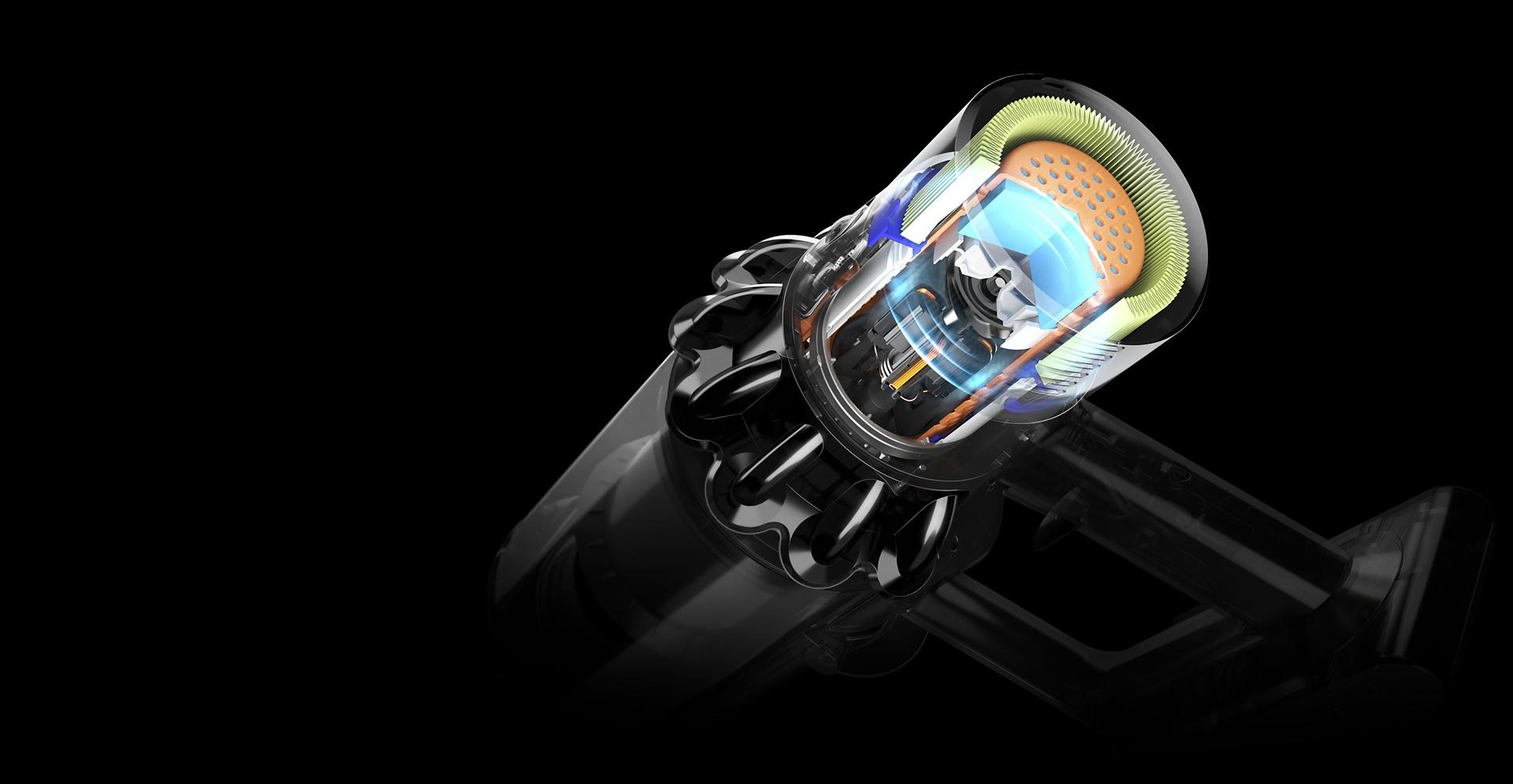The Dyson digital motor V10.
The smallest, lightest, yet strongest vacuum cleaner motor Dyson has ever produced since we started production. Its ceramic shaft is cured at 1,600°C to make it 3 times harder than steel, yet with half the density.1 With the impeller moved from the front of motor to the back, axial flow draws in cooler air to reduce the temperature and allow the motor to spin at up to 125,000rpm which generates constant powerful suction.2

- 880 Layers of paper-thin laminated steel generate magnetic fields to spin the motor.
- 79,000 G-force generated inside each of the 14 cyclones.
- 250 + Patents and patents pending on Dyson Cyclone V10™ technologies.
14 cyclones.
Generating forces of more than 79,000g, the vacuum flings microscopic particles – such as pollen and even bacteria – into the bin. By arranging each of the 14 cyclones concentrically around the central axis of the machine, air flows more efficiently through it. As the cyclone narrows, air is accelerated from 45mph to 120mph to create the centrifugal forces that capture fine particles.

In-line configuration.
The ‘point and shoot’ alignment of the motor, bin and cyclone allows air to be drawn directly from the cleaner head into the cyclones in a straight line. This, combined with the more powerful Dyson digital motor V10, contributes to a strong suction power to Dyson Cyclone V10™ vacuum cleaners.

Whole-system filtration.
With an airtight gasket around the cyclone assembly and a pressurised rubber seal around the advanced filter, the whole system is fully sealed – preventing dust, allergens and bacteria from leaking back into the air. This means the vacuum retains 99.97% of dust as small as 0.3 microns, and expels cleaner air.3

Acoustically engineered.
An aerodynamic motor housing regulates airflow paths around the motor, reducing noisy turbulence. It’s combined with acoustic material to absorb vibrations, a post-motor filter that dampens sound, and an acoustic baffle which further reduces volume by blocking the line of sight to the sound source.


2Suction tested to EN 60312-1 CL5.8 and CL5.9 at the hose/wand, loaded to bin full, tested in MAX mode.
3Tested against ASTM F1977-04, tested in MAX mode.
